Starting a raised bed garden in the city is like sprouting your own little paradise amid the concrete jungle! First, find a sunny spot that gets at least six hours of golden sunlight. Then, choose eye-catching materials like reclaimed wood or colorful bricks. Fill your beds with rich compost and pick out vibrant veggies like tomatoes or fragrant herbs like basil. Don’t forget to keep your plants hydrated and watch for pesky bugs. Stick around, and you’ll discover more tips to make your garden thrive!
Choosing the Right Location for Your Raised Bed
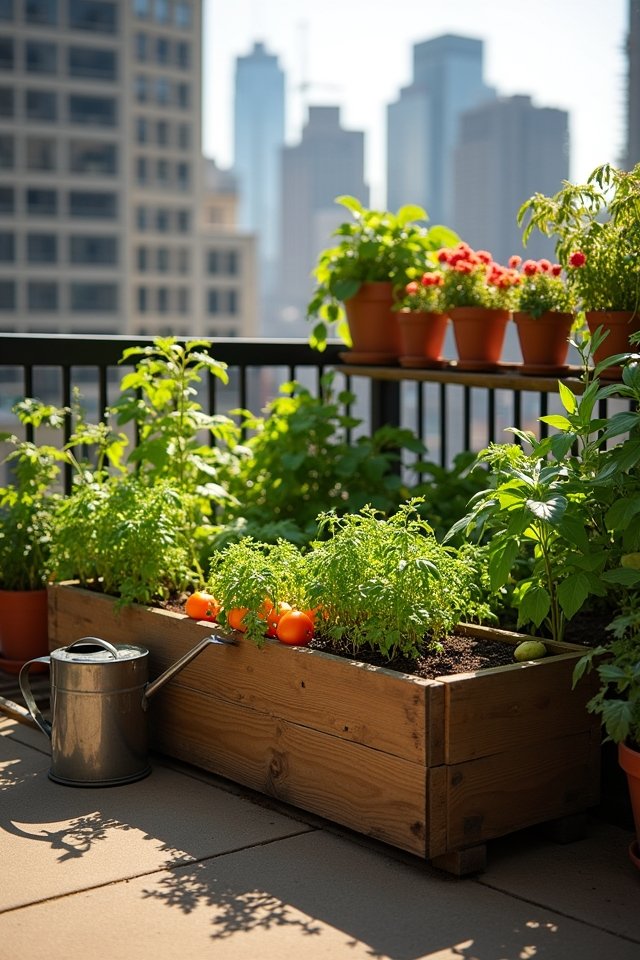
When it comes to choosing the perfect spot for your raised bed garden, think of it as finding a cozy nook for a beloved pet! You want sunny, welcoming spaces where your plants can soak up the sun’s rays like a sunbather on a beach! Aim for a location that gets at least six hours of sunlight daily, and pick a flat, well-drained area. Imagine your plants waving their leaves in gratitude for good drainage! Avoid shady corners that’ll leave your veggies feeling gloomy and wilted. Have fun with your design—perhaps create a whimsical path or a cute border! So, scout out your yard like a treasure hunter, envisioning the vibrant life your garden will bring to that perfect spot!
Selecting Materials for Your Raised Bed
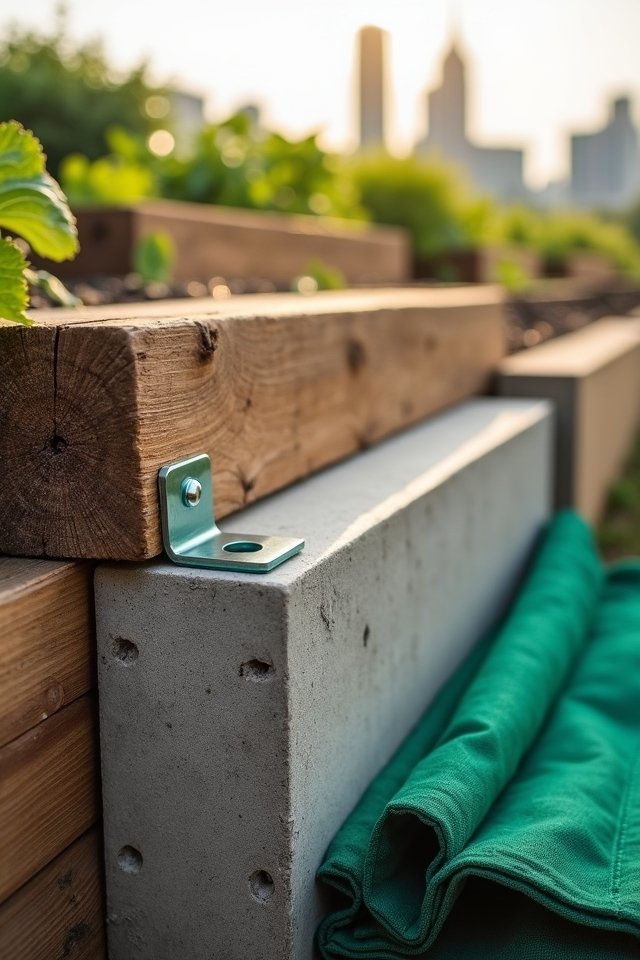
Selecting the right materials for your raised bed can feel as exciting as choosing paint colors for a new room! You’ve got options, and they can really spark your creativity. For a chic and eco-friendly vibe, consider cedar or redwood—they resist rot and smell divine! Want to upcycle? Old bricks or reclaimed wood tell a story while saving the planet. Just picture your garden encased in rugged charm! If you’re in a high-moisture area, try composite boards, as they’re both durable and weather-resistant. But don’t forget the sturdy screws and corner brackets to hold it all together! What’s better than a beautifully constructed raised bed, inviting your plants to flourish? Let your imagination run wild as you build your urban oasis!
Soil Preparation and Plant Selection
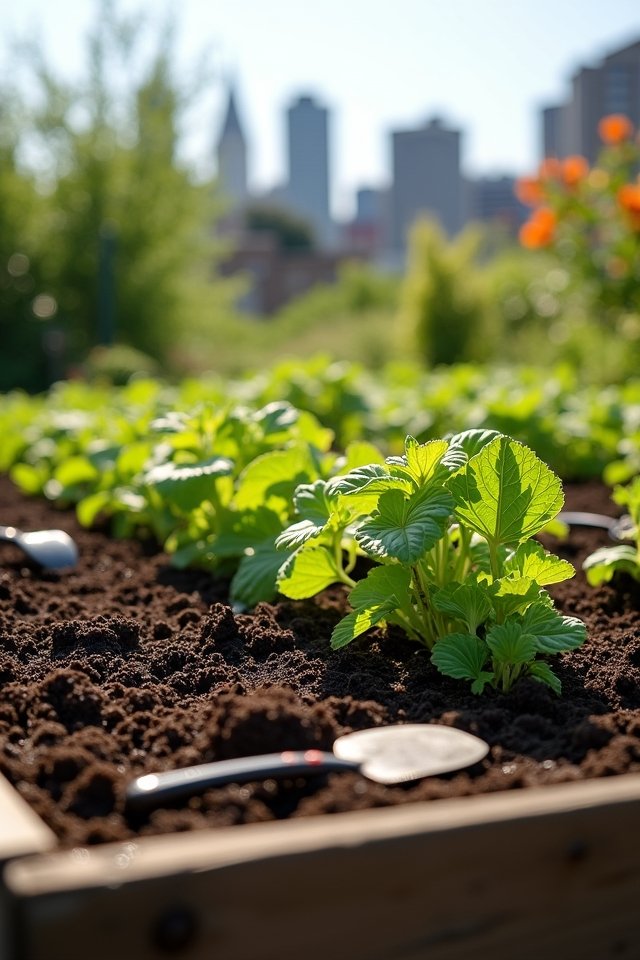
Now that you’ve crafted the perfect raised bed, it’s time to bring it to life with some scrumptious soil and a bit of plant magic! First, fill your bed with a blend of rich compost, nutrient-dense topsoil, and a sprinkling of organic matter. Think of it as making a delightful cake for your plants! Next, let’s choose vibrant veggies or aromatic herbs that suit your style—how about zesty basil that’ll make your pasta sing, or crunchy carrots that’ll remind you of garden-fresh goodness? Don’t forget flowers for pollinators, too! Consider companion planting for a harmonious garden ballet. Ready to dig in and watch your green dreams bloom? Get excited! Your innovative urban oasis is just a shovel away!
Watering Techniques for Urban Gardens
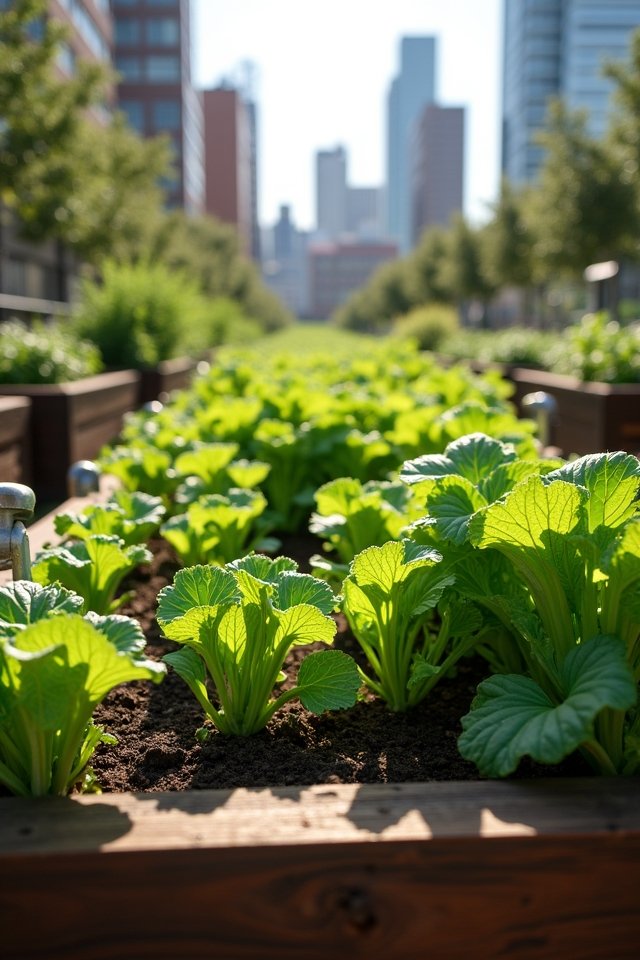
Although it might sound simple, watering your urban garden can actually be an art form! Imagine it’s a dance—your plants crave the perfect rhythm. For vibrant growth, water deeply but less frequently; think of it as filling a reservoir, not just sprinkling a puddle! Use a soaker hose or drip irrigation system; they’re like cozy blankets for your roots, ensuring even moisture.
And don’t forget rainwater! Set up a rain barrel; it’s nature’s gift, and it’s eco-friendly too. Just check the soil moisture with your finger—if it feels like a sponge, it’s time to hydrate! Keep an eye on your plants, tune into their needs, and soon you’ll master your watering technique, bringing life and laughter to your urban oasis!
Maximizing Space With Vertical Gardening
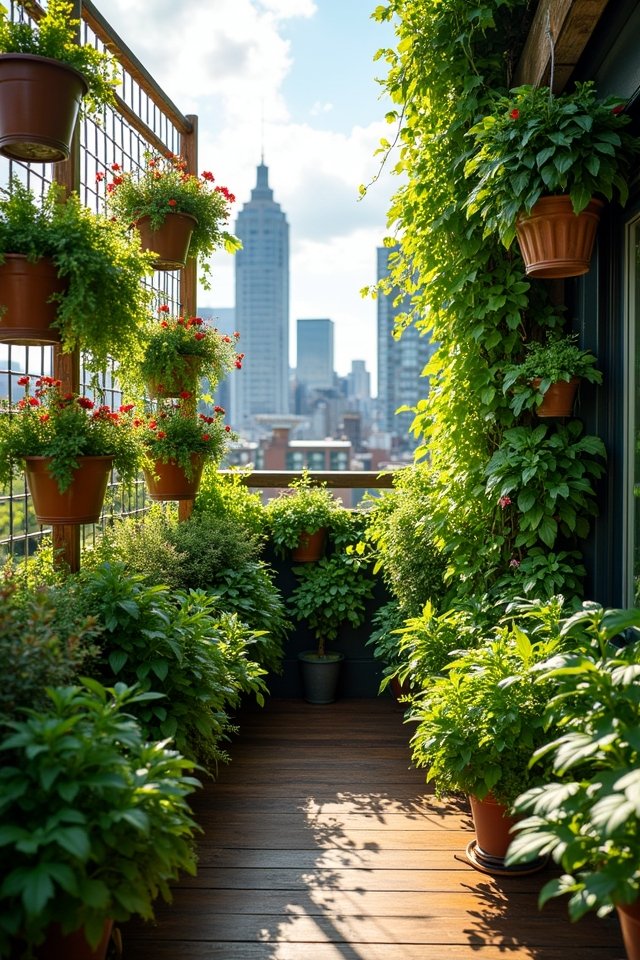
When you think about gardening, how often do you picture layers of lush greens climbing your walls? Vertical gardening is the perfect solution to maximize your space and add a splash of creativity. Imagine vibrant rows of strawberries cascading down a trellis or succulent herbs peeking out from a DIY pallet! You can use wall planters, hanging pots, or even repurpose old crates. It’s not just pretty; it saves valuable ground space while bringing a unique aesthetic to your urban oasis. So why limit yourself? Create a living mural bursting with color and flavor. You’ll be amazed at how much you can grow, all while sparking conversations with curious neighbors. Ready to transform your vertical garden dreams into reality? Let’s go!
Managing Pests and Diseases in Small Spaces
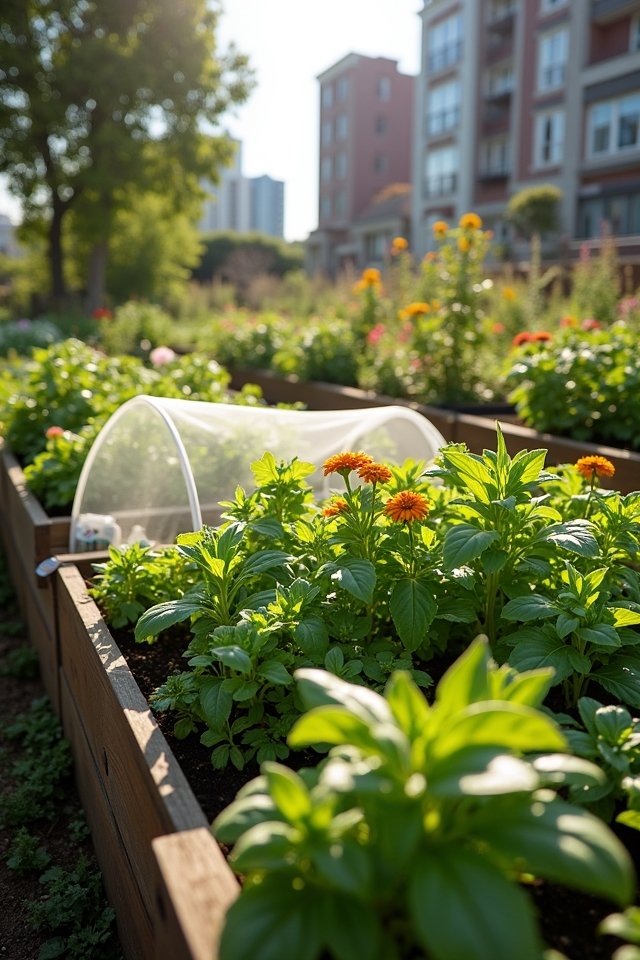
Creating your vertical garden is just the beginning of your gardening adventure! Once you’ve planted those vibrant sprouts, it’s time to tackle pests and diseases lurking in the shadows. Think of your garden as a mini fortress—strategically defend it with companion planting. For instance, marigolds can repel pesky aphids, making them your floral soldiers! Don’t forget to inspect your plants regularly, just like a detective on a case. If you spot a bad bug or wilted leaf, act fast—grab some neem oil or create a soap spray for those offenders! Remember, a little prevention goes a long way, and your garden will thrive, bursting with color and flavor. You’ve got this! Let’s keep those greens healthy and happy!
Frequently Asked Questions
Can I Start a Raised Bed Garden on Concrete Surfaces?
You can definitely start a raised bed garden on concrete surfaces! Just imagine your colorful vegetables bursting forth from vibrant soil, even amidst the urban jungle! To make it happen, use sturdy materials like wood or composite boards to create beautiful beds. Add a layer of cardboard to smother weeds, then fill with nutrient-rich soil, and watch those greens thrive! Who knew concrete could be a canvas for your gardening masterpiece? Let’s dig in and grow!
How Much Sunlight Do Raised Beds Need Daily?
Your raised beds need about six to eight hours of sunlight each day—think of it as their spa day! Without enough sun, plants can become droopy, like a party guest who’s not having fun. So, pick a bright spot! If you’ve got some variety, remember that leafy greens love partial shade, while tomatoes are sun worshippers. Get them the golden rays they crave, and they’ll reward you with juicy harvests!
What Plants Are Best for Beginners in Urban Settings?
If you’re diving into urban gardening, start with easy-to-manage herbs like basil or mint! They’ll flourish in small spaces and add zest to your meals. Colorful veggies like radishes and lettuce are also fantastic choices—they sprout quickly, giving you instant gratification. Plus, they’re like the overachievers of the garden! Want a splash of sweetness? Try strawberries! Who doesn’t love fresh berries? So, let’s get planting and watch your little paradise bloom!
Are There Specific Local Regulations for Urban Gardening?
Before you dig in, check out local regulations! Some cities have rules like height limits for raised beds or restrictions on types of plants. Imagine a thriving garden but, oops, you’re in violation! You wouldn’t want a garden gnome summoned by code enforcement, right? You can usually find this info online or at community centers. So, grab your phone, do a little sleuthing, and bring your garden dreams to life legally!
How Do I Attract Pollinators to My Raised Bed?
You want to attract pollinators to your raised bed? It’s simpler than you think! Plant vibrant flowers like marigolds and sunflowers that dance in the breeze, beckoning bees and butterflies. Add some fragrant herbs like lavender and mint; they’re like candy for pollinators! Create a water source, too—small dishes with pebbles can be delightful sipping spots. Remember, a buzzing garden isn’t just attractive; it’s a lively ecosystem celebrating nature’s magic!


